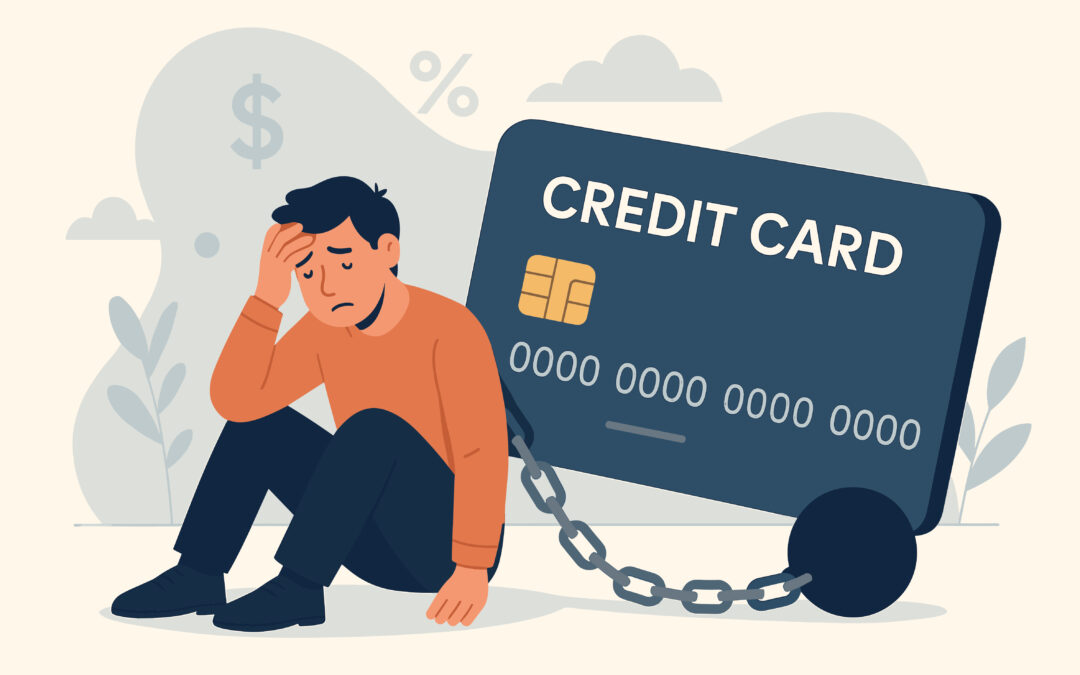Financial distress can feel overwhelming, leaving you searching for the most effective way to regain control of your finances. When debt becomes unmanageable, you face a critical decision: pursue traditional debt relief options or consider bankruptcy. While both paths aim to address financial difficulties, they offer vastly different outcomes and protections.
Many people automatically dismiss bankruptcy due to misconceptions, instead turning to debt settlement companies or consolidation loans. However, bankruptcy often provides more comprehensive protection and a clearer path to genuine financial recovery than other debt relief methods.
This comparison will help you understand why bankruptcy might be the superior choice for achieving lasting financial freedom, offering legal protections and definitive solutions that other debt relief options simply cannot match.
Understanding Bankruptcy
What Is Bankruptcy?
Bankruptcy is a legal process that provides individuals and businesses with relief from overwhelming debt through federal court supervision. For individuals, two primary types offer different approaches to debt resolution: Chapter 7 and Chapter 13 bankruptcy.
Chapter 7 bankruptcy allows you to discharge most unsecured debts, including credit card balances, medical bills, and personal loans. This process typically takes three to six months and offers the fastest path to debt elimination. Chapter 13 bankruptcy involves creating a court-approved repayment plan spanning three to five years, allowing you to keep certain assets while reorganizing your debts.
Key Benefits of Bankruptcy
Bankruptcy provides immediate and powerful protections that other debt relief options cannot offer. The automatic stay takes effect the moment you file, immediately stopping most collection activities, foreclosure proceedings, and wage garnishments. This legal shield gives you breathing room to address your financial situation without constant pressure from creditors.
The potential for complete debt discharge sets bankruptcy apart from other solutions. Many qualifying debts can be completely eliminated, providing a genuine fresh start rather than merely reducing payment amounts. This legal finality means creditors cannot continue pursuing discharged debts, offering peace of mind and financial clarity.
Bankruptcy also provides structured protection for essential assets. Exemptions allow you to keep your home, vehicle, and other necessary property while eliminating overwhelming debt burdens.
Debt Relief Options Explained
Common Debt Relief Methods
Debt settlement involves negotiating with creditors to accept less than the full amount owed. Companies often promise significant debt reduction, but results vary widely and success is not guaranteed. This process can take several years and may not address all your debts.
Debt consolidation loans combine multiple debts into a single payment, potentially with lower interest rates. However, this approach requires good credit and doesn’t eliminate debt—it simply reorganizes existing obligations. Credit counseling services help create management plans for repaying debts over time, but creditor participation is voluntary.
Informal negotiation with creditors may result in modified payment terms or temporary relief, but these arrangements lack legal enforceability and may not provide long-term solutions.
Limitations and Risks
These traditional debt relief methods share significant limitations that can undermine their effectiveness. None provide legal protection from creditors, meaning collection calls, lawsuits, and garnishments can continue throughout the process. Creditors maintain the right to pursue full payment regardless of your participation in debt relief programs.
Tax implications often accompany debt forgiveness through settlement or negotiation. Forgiven debt may be considered taxable income, potentially creating unexpected tax obligations. The lengthy and uncertain nature of these processes can prolong financial stress without guaranteeing successful resolution.
Many debt relief programs fail to address all debts comprehensively, leaving you vulnerable to remaining obligations. Without legal enforceability, creditors can withdraw from agreements or refuse to participate entirely.
Bankruptcy vs. Debt Relief: A Clear Comparison
The differences between bankruptcy and other debt relief options become apparent when examining their core features:
Legal Protection: Bankruptcy provides immediate automatic stay protection, while other options offer no legal shield from creditor actions.
Debt Elimination: Bankruptcy can completely discharge qualifying debts, whereas other methods typically only reduce payments or extend repayment terms.
Time to Resolution: Chapter 7 bankruptcy typically concludes within three to six months, while debt relief programs often require one to five years or longer.
Success Rate: Bankruptcy offers court-enforced resolution with predictable outcomes, while other methods depend on creditor cooperation and voluntary participation.
Comprehensive Coverage: Bankruptcy addresses all qualifying debts simultaneously, while other options may only cover specific obligations or participating creditors.
Why Bankruptcy May Be the Better Choice
Bankruptcy ensures fair treatment of all creditors through court supervision, preventing selective enforcement or harassment. The structured legal process provides clear timelines and predictable outcomes, unlike the uncertainty of voluntary debt relief programs.
The court-supervised nature of bankruptcy offers protection from most lawsuits and collection attempts, allowing you to focus on rebuilding rather than defending against creditor actions. This legal framework provides genuine debt relief rather than temporary fixes that may fail over time.
Bankruptcy grants a true fresh start opportunity, allowing you to rebuild credit and finances from a stable foundation. Rather than struggling with reduced payments for years, you can begin recovery immediately after discharge.
Common Misconceptions About Bankruptcy
Many people believe bankruptcy ruins their financial future permanently, but this misconception prevents them from accessing effective relief. Credit recovery after bankruptcy often occurs faster than expected, with many individuals rebuilding good credit within two to three years.
The fear of losing everything in bankruptcy is largely unfounded. Exemptions protect essential assets including your home, vehicle, retirement accounts, and personal belongings. Most people keep their property while eliminating overwhelming debt burdens.
Career concerns about bankruptcy are often exaggerated. While certain specialized positions may consider bankruptcy history, most employers cannot discriminate based on bankruptcy filings, and many successful professionals have used bankruptcy to rebuild their financial lives.
When to Seriously Consider Bankruptcy Over Other Options
Bankruptcy becomes the superior choice when facing immediate threats like lawsuits, foreclosure, or wage garnishments. The automatic stay provides instant protection that other debt relief methods cannot offer.
If your debts are overwhelming with no realistic ability to repay them within a reasonable timeframe, bankruptcy provides the most efficient path to resolution. Continuing to struggle with unmanageable debt often worsens your financial situation and delays inevitable relief.
Previous failed attempts at debt relief indicate that voluntary programs may not work for your situation. Bankruptcy offers court-enforced solutions when creditor cooperation is lacking or when debt levels exceed what settlement programs can address effectively.
Your Path Forward Starts Here
Bankruptcy offers comprehensive protection, legal certainty, and genuine debt relief that other options cannot match. While traditional debt relief methods may appear less drastic, they often provide temporary fixes rather than permanent solutions.
The structured legal process of bankruptcy ensures fair treatment while providing the fresh start you need to rebuild financial stability. Rather than spending years struggling with reduced payments or uncertain outcomes, bankruptcy allows you to address your debt crisis definitively and begin recovery immediately.
If you’re facing overwhelming debt and need real solutions, don’t let misconceptions prevent you from exploring bankruptcy as a viable option. Consulting with a qualified bankruptcy attorney can help you understand how this powerful legal tool might provide the clean slate you need to rebuild your financial future.


